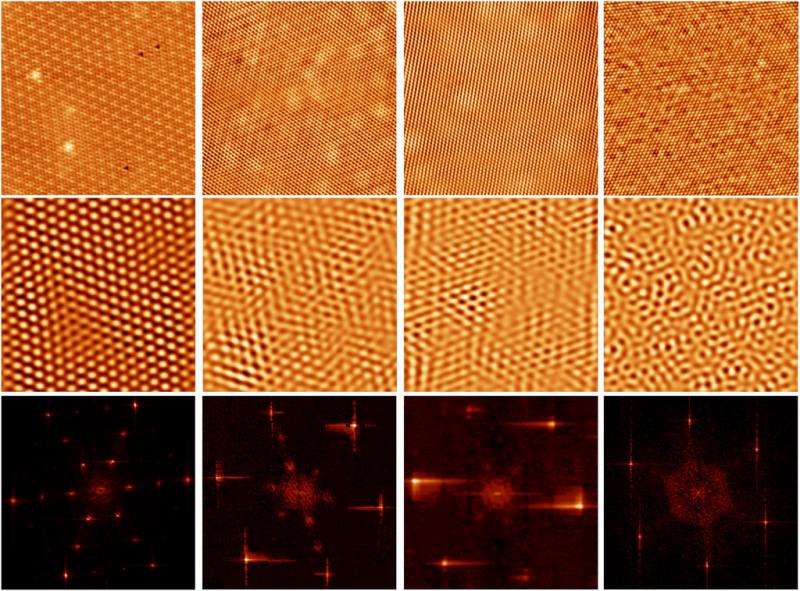Unraveling the origin of the pseudogap in a charge density wave compound

The pseudogap, a state characterized by a partial gap and loss of coherence in the electronic excitations, has been associated with many unusual physical phenomena in a variety of materials ranging from cold atoms to colossal magnetoresistant manganese oxides to high temperature copper oxide superconductors. Its nature, however, remains controversial due to the complexity of these materials and the difficulties in studying them.
By combining a variety of different experimental techniques and theory, a group led by researchers at the U.S. Department of Energy's Argonne National Laboratory obtained unique insights into the nature of the pseudogap state in a canonical charge density wave material.
Ordinarily, atoms in a metal form a lattice. Under certain circumstances, the electrons in some of those atoms can crowd more densely in some areas, forming a so-called a charge density wave. The researchers found that niobium diselenide displays short-range charge density wave order and pseudogap behavior across large ranges of temperatures and doping.
"This has a profound influence on the properties of the material," said Stephan Rosenkranz, an Argonne physicist, in the Materials Science Division, who co-led the study.
The presence of charge density waves has also been associated with phenomena in materials that can superconduct, or conduct electricity perfectly without any loss at extremely low temperatures, and that display colossal magnetoresistance, changing electrical resistance in the presence of a magnetic field—both properties that makes them very useful in electronics and technologies. Because the physics of these behaviors likely affect how those very useful materials work, scientists are interested in understanding them more fully.
The scientists studied the phenomenon in a simple compound called niobium diselenide, which displays charge density wave order near the temperature at which superconductors work (about minus 280 degrees Fahrenheit). Under normal conditions, the charge density wave appears as long, uniform rows.
But when the researchers increased the temperature or mixed in atoms of other materials—a technique called doping—the charge density waves became less ordered. The previously long, uniform waves broke up into small pockets of locally well-ordered charge density waves, with random phases between waves in different pockets. This effect wasn't previously visible in other studies because that research looked at the average ordering across the material, which canceled out the phase variation.
Upon increasing temperature or doping, the material also lost the previously present coherent electronic excitations and displayed an energy gap across a large range of temperatures despite not having long-range ordering. This is similar to the behavior in the mysterious "pseudogap" state observed in high-temperature superconductors.
Understanding the physical properties underlying these phenomena in a relatively uncomplicated system, such as niobium diselenide, "helps us shed light on phenomena observed in more complex materials," Rosenkranz said.
The researchers measured the effects using scanning tunneling microscopy and angle-resolved photoemission, as well as X-ray scattering at the Advanced Photon Source, a DOE Office of Science user facility located at Argonne, using beamlines 11-ID-D and 6-ID-D.
More information: The study, "Emergence of coherence in the charge-density wave state of 2H-Nb-Se2," was published in late February in Nature Communications, www.nature.com/ncomms/2015/150 … full/ncomms7313.html
Journal information: Nature Communications
Provided by Argonne National Laboratory





















